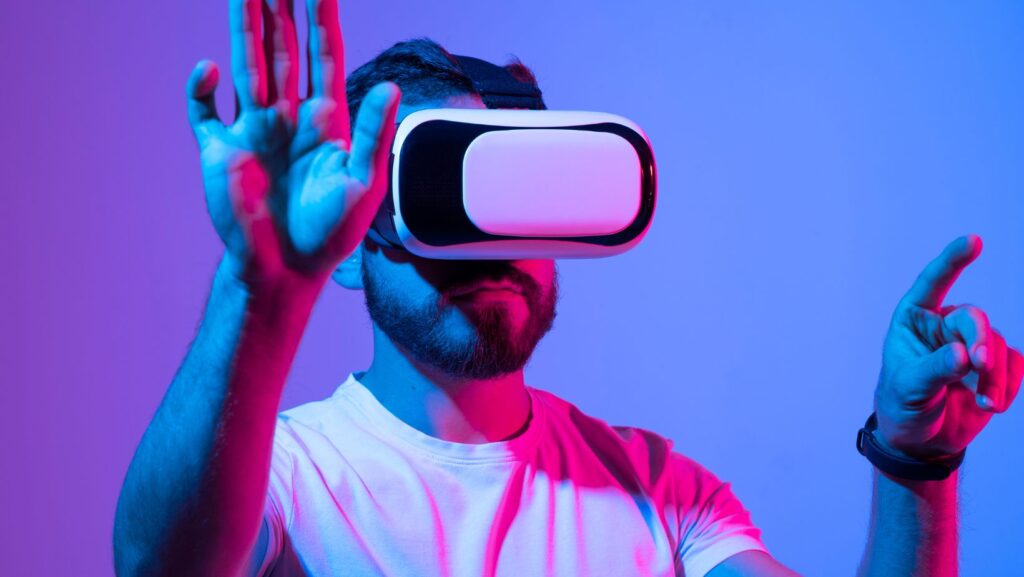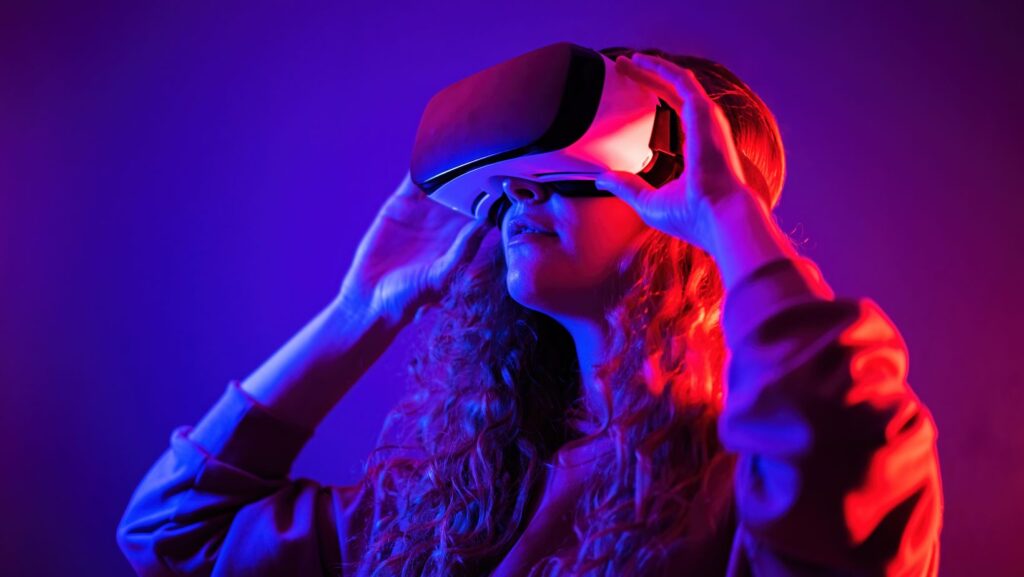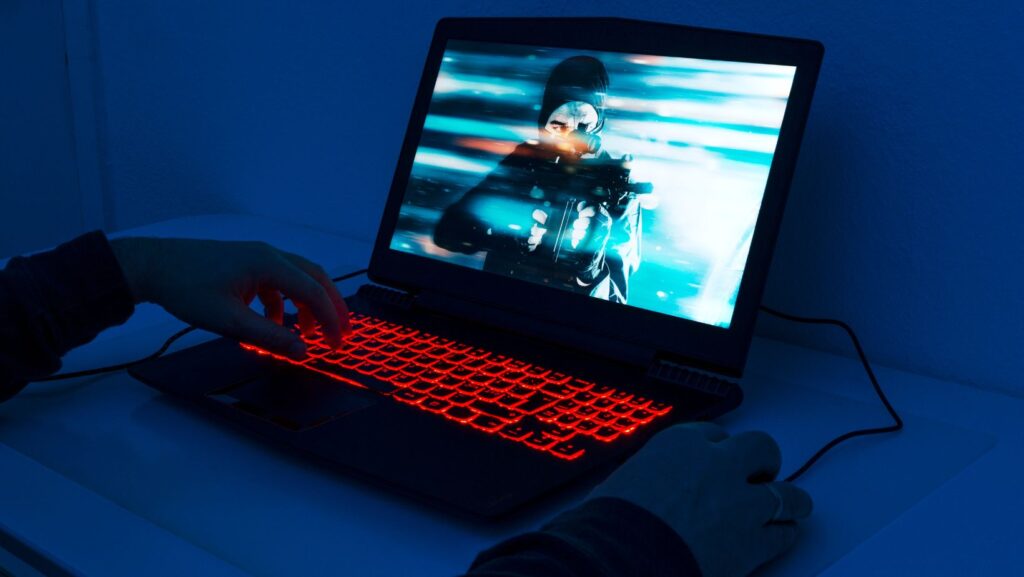 Virtual reality (VR) gaming has come a long way since its early days, transforming from a niche curiosity into a mainstream phenomenon. With rapid advancements in technology, the future of VR games looks more promising than ever. Gamers are no longer just playing; they’re stepping into immersive worlds where they can interact with their surroundings in ways previously unimaginable. As VR hardware becomes more accessible and game developers push the boundaries of creativity, the potential for innovation seems limitless. From hyper-realistic graphics to tactile feedback systems, the next generation of VR promises to deliver experiences that blur the line between the virtual and the real. The future of VR games isn’t just about better games; it’s about creating entirely new ways for people to connect, compete, and explore.
Virtual reality (VR) gaming has come a long way since its early days, transforming from a niche curiosity into a mainstream phenomenon. With rapid advancements in technology, the future of VR games looks more promising than ever. Gamers are no longer just playing; they’re stepping into immersive worlds where they can interact with their surroundings in ways previously unimaginable. As VR hardware becomes more accessible and game developers push the boundaries of creativity, the potential for innovation seems limitless. From hyper-realistic graphics to tactile feedback systems, the next generation of VR promises to deliver experiences that blur the line between the virtual and the real. The future of VR games isn’t just about better games; it’s about creating entirely new ways for people to connect, compete, and explore.
Future Of Vr Gaming
Early Beginnings and Progress
VR gaming has come a long way since its inception. Early iterations in the late 20th century offered rudimentary visuals and limited interactivity. The 1990s saw initial commercial attempts such as Sega VR and Nintendo’s Virtual Boy, which failed due to technological constraints and high costs. Significant advancements began in the early 2000s with improved graphics processing units (GPUs) and motion-sensing technologies. By the mid-2010s, companies like Oculus Rift and HTC Vive rejuvenated interest with more advanced headsets and immersive experiences. These platforms incorporated higher-resolution displays and precise motion tracking, shifting VR from mere novelty to a serious gaming platform. The development of frameworks like Unity and Unreal Engine further fueled innovation.
Current State of VR Technologies
 Presently, VR gaming harnesses cutting-edge technologies, creating immersive and interactive environments. High-resolution headsets such as the Oculus Quest 2 and PlayStation VR provide expansive fields of view and lifelike visuals. These devices employ advanced optics and integrated tracking systems to eliminate motion sickness and latency issues. Haptic feedback advancements add tactile sensations, with peripherals like VR gloves and suits simulating real-world touch. Games such as “Half-Life: Alyx” showcase detailed environments, complex physics, and dynamic interactions leveraging these advancements. Companies are also exploring cloud-based VR gaming, aiming to reduce the need for powerful on-site hardware. Platforms like Nvidia GeForce NOW offer cloud-rendered experiences accessible via various devices. Social VR experiences enable users to connect in shared virtual spaces for gaming and collaborative tasks.
Presently, VR gaming harnesses cutting-edge technologies, creating immersive and interactive environments. High-resolution headsets such as the Oculus Quest 2 and PlayStation VR provide expansive fields of view and lifelike visuals. These devices employ advanced optics and integrated tracking systems to eliminate motion sickness and latency issues. Haptic feedback advancements add tactile sensations, with peripherals like VR gloves and suits simulating real-world touch. Games such as “Half-Life: Alyx” showcase detailed environments, complex physics, and dynamic interactions leveraging these advancements. Companies are also exploring cloud-based VR gaming, aiming to reduce the need for powerful on-site hardware. Platforms like Nvidia GeForce NOW offer cloud-rendered experiences accessible via various devices. Social VR experiences enable users to connect in shared virtual spaces for gaming and collaborative tasks.
Technologies Shaping the Future of VR Games
Advances in VR Headsets
Technological improvements in VR headsets drive significant future innovations in VR gaming. Modern headsets, such as those from Oculus Rift and HTC Vive, offer higher resolutions, larger fields of view, and better refresh rates. For instance, the Oculus Quest 2 features a resolution of 1832×1920 pixels per eye, enhancing visual clarity. Integrated eye-tracking further boosts realism by adjusting focus based on where the user is looking. Lightweight materials and ergonomic designs make prolonged use more comfortable. Standalone headsets, which don’t require a PC or console, increase accessibility and convenience for users.
Breakthroughs in Motion Tracking and Haptics
 Motion tracking and haptic feedback advancements revolutionize VR gaming interactivity and immersion. Full-body tracking systems, like Vive Tracker, capture intricate player movements, translating them into virtual actions. High-precision motion sensors enable more fluid and natural game interactions. Haptic technology adds a tactile dimension to VR experiences. Devices like the HaptX Gloves simulate touch sensations, giving users physical feedback when interacting with virtual objects. Tactile suits, such as the Haptics TactSuit, provide comprehensive body feedback, enhancing immersion in gameplay. These breakthroughs create more lifelike and responsive gaming environments. Enhancements in VR headsets, motion tracking, and haptics collectively shape the future of VR games, offering increasingly immersive and interactive experiences for users.
Motion tracking and haptic feedback advancements revolutionize VR gaming interactivity and immersion. Full-body tracking systems, like Vive Tracker, capture intricate player movements, translating them into virtual actions. High-precision motion sensors enable more fluid and natural game interactions. Haptic technology adds a tactile dimension to VR experiences. Devices like the HaptX Gloves simulate touch sensations, giving users physical feedback when interacting with virtual objects. Tactile suits, such as the Haptics TactSuit, provide comprehensive body feedback, enhancing immersion in gameplay. These breakthroughs create more lifelike and responsive gaming environments. Enhancements in VR headsets, motion tracking, and haptics collectively shape the future of VR games, offering increasingly immersive and interactive experiences for users.
The Role of AI in VR Gaming
Enhancing Realism Through AI
AI enhances realism in VR gaming by simulating complex environments and creating responsive NPCs, improving player immersion. By using machine learning, VR systems adapt to user behavior, creating personalized experiences and increasing engagement. For example, AI-driven characters react naturally to player actions, adding depth to narratives. AI algorithms also generate realistic physics, enhancing interactions. For instance, AI calculates object trajectories, ensuring realistic movements. These enhancements make VR environments more convincing. AI’s real-time processing capabilities ensure smoother gameplay, reducing latency and motion sickness.



